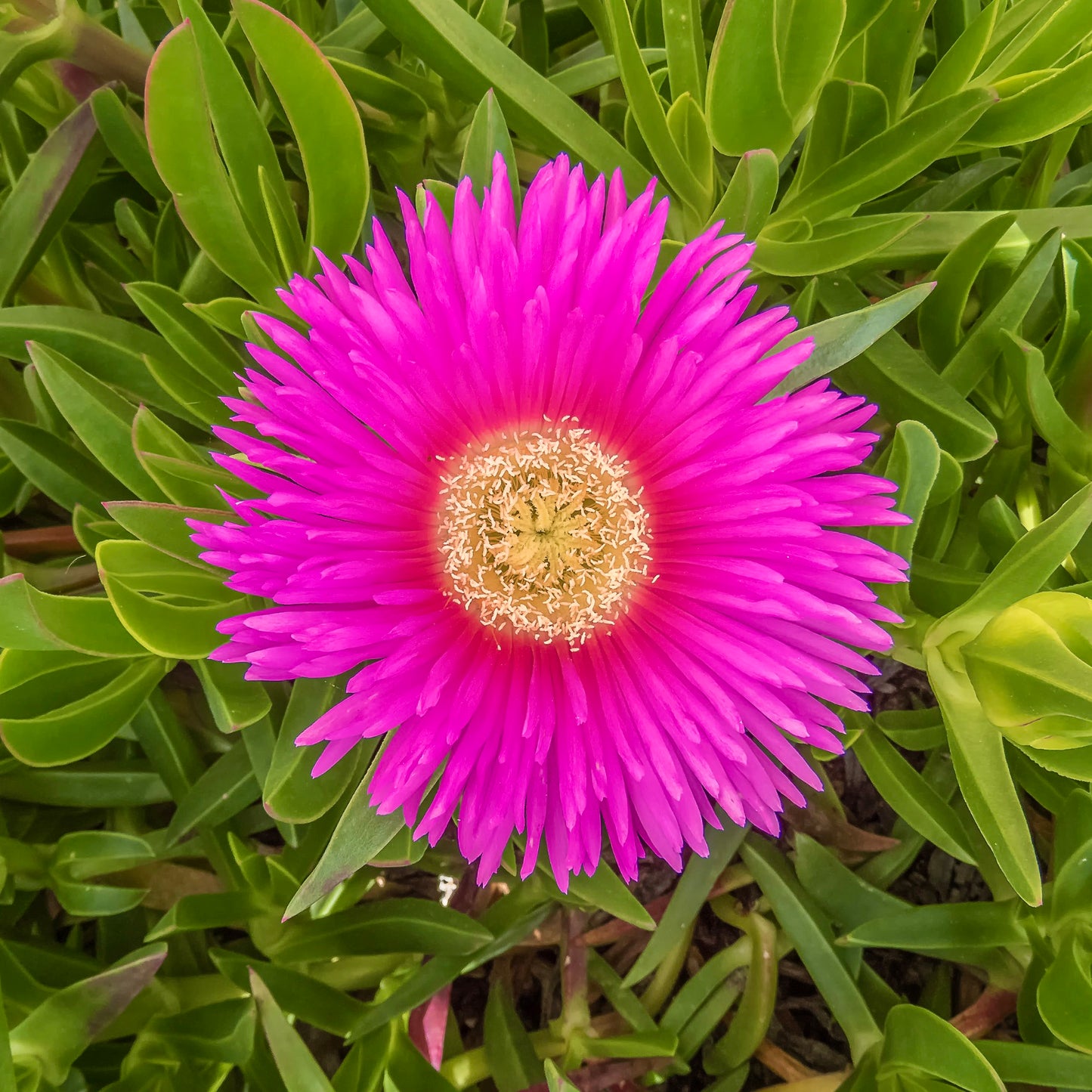- Catalogue Plants
Carpobrotus edulis 15-20cm
Carpobrotus edulis 15-20cm
Couldn't load pickup availability
Plant Description
Carpobrotus edulis, commonly known as Hottentot fig or ice plant, is a succulent ground cover plant native to South Africa. It is known for its fleshy, triangular leaves and large, colorful flowers.
-
Growth Habit: Carpobrotus edulis is a low-growing, trailing or spreading succulent that forms a dense mat on the ground. It can reach a height of 12 inches (30 cm) or more and spreads horizontally, covering a wide area.
-
Leaves: The leaves are thick, fleshy, and triangular in shape, with a bluish-green to gray-green color. They are arranged opposite each other along trailing stems and are often covered in tiny, glistening water-filled bladders.
-
Flowers: One of the most striking features of Carpobrotus edulis is its large, showy flowers. These flowers can be pink, purple, orange, or yellow, depending on the variety. They typically have numerous petals and a bright yellow center.
-
Fruit: After flowering, Carpobrotus edulis produces cylindrical fruit capsules that contain small, edible, red or pink berries. The berries are sweet and juicy, though the taste can vary between varieties.
Cultivation:
-
Climate: Carpobrotus edulis is well-suited for Mediterranean climates and coastal areas with mild winters. It is tolerant of salt spray, making it a good choice for coastal gardens.
-
Sunlight: Plant Hottentot fig in a location that receives full sun. It thrives in bright sunlight and may not flower well in partial shade.
-
Soil: This succulent prefers well-draining soil with good aeration. Sandy or gravelly soils are ideal for Carpobrotus edulis. It can tolerate slightly alkaline soil but prefers neutral to slightly acidic conditions.
-
Watering: Once established, Hottentot fig is drought-tolerant and does not require frequent watering. Overwatering can lead to rotting of the roots and stems, so it's best to let the soil dry out between waterings.
-
Mulching: Applying a layer of mulch around the plants can help retain moisture in the soil and control weeds.
-
Pruning: Carpobrotus edulis is relatively low-maintenance in terms of pruning. You can trim it back if it becomes too invasive or to shape the ground cover as desired.
-
Propagation: You can propagate Hottentot fig from stem cuttings or by division. Allow cuttings to callus for a few days before planting them in well-draining soil.
-
Invasive Potential: Be aware that Carpobrotus edulis can be invasive in some regions, particularly in coastal areas where it can outcompete native vegetation. Check with local authorities or conservation organizations before planting it in your area to ensure it is not considered an invasive species.
-
Edibility: The berries of Carpobrotus edulis are edible and can be eaten fresh or used in jams and preserves. However, be cautious when foraging for wild plants, as some areas may have restrictions or regulations regarding the collection of native plants.
Carpobrotus edulis can be a valuable ground cover option for coastal and Mediterranean gardens, providing both ornamental beauty and edible fruit. However, its invasive potential should be carefully considered, and it should only be planted in areas where it is not a threat to local ecosystems.
IMPORTANT: Please be aware that picture 1 show adult plant not for sale, the offer is for a plant in the dimension indicated in title description.
Botanical family: Aizoaceae
Botanical genus: Carpobrotus
Botanical species: Carpobrotus edulis
SKU:BA-0689-S
Cultivation
Cultivation
Info and Disclaimers
Info and Disclaimers
Plant Height: 15-20cm
Plant Diameter:
Pot Size:
Grafted/Not Grafted:
Disclaimer: Be aware that most plants change across seasons. If present foliage, could have been fallen or change in its color.


